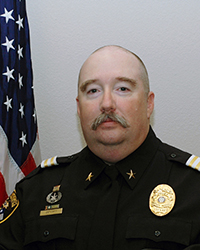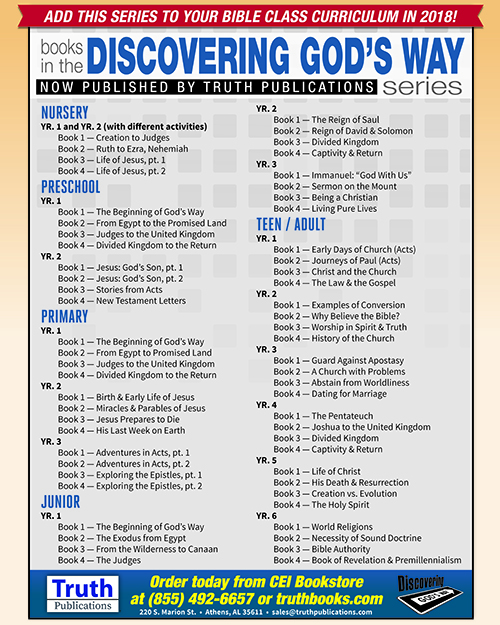

by Michael R. (Mike) Gentry
Synopsis: Considering the violent nature of our culture, and recent cases where gunmen have entered houses of worship, Mike Gentry (chief of police in Harker Heights, TX and an elder of the Leon Valley congregation in Temple, TX) counsels brethren on ways they can improve church safety.
As a 40 year law enforcement professional with a background in tactical and high risk operations, it is not my intention to create panic or undue concern. However, I believe a bit of honest discussion and pre-planning is beneficial. This article is written with the intention of giving local churches some food for thought and provide a framework for reacting to an active shooter incident. The recommendations contained herein are recognized in the field and are congruent with the way law enforcement officers and civilians are being trained nationwide.
As an elder, I also hope to remind us that our first responsibility is to attend to the scripturally authorized work of the local church. We invite strangers to attend our worship services and we should always be a welcoming group of Christians anxious to teach the truth of God's word to whoever will hear it. As a result, we must never abandon our spiritual service of worship for the sake of security. We should also study God's word so as to be well-trained and knowledgeable on scriptural truth regarding our decisions to physically defend ourselves. Not intending to write this article as a Bible study on those issues, I would leave it to elders and preachers to provide the appropriate and relevant biblical teaching.
Moreover, we should remember that these events are statistically rare. Only a very few violent acts have occurred at churches of various denominations. It is important not to lose our perspective and be unnecessarily fearful, paralyzed, or overly suspicious of people we meet. We must not lose sight of the blessings that we enjoy and cower in fear of things that will likely never occur. Instead let us be reasonably attentive to our environment, and be recognize the need for some level of preparedness.
Generally speaking, church buildings are not designed for security; rather, they are designed for aesthetics and usability. Building and fire codes normally contain certain restrictions so as to provide for ease of ingress and egress. Doors, even when locked, are required to be openable from the inside without a key. Emergency exits should be easy to find and allow the quick evacuation of the building through multiple locations.
Chokepoints where people are likely to bunch up when moving as a group should be identified and preferential exits assigned based on where people are normally located. Occupants should be instructed to move to the nearest, safe exit in an emergency. Some rooms such as classrooms should be lockable from the inside.
Reasonable control of the building and observation capabilities during assemblies are beneficial. Consider locking external doors during assemblies and providing individuals to unlock doors as needed for late comers or deny access to those seeking to do harm. Some groups make "foyer duty" assignments during assemblies so one or two people can monitor those doors while still participating in the worship services or classes. If law enforcement officers or those licensed to carry weapons are members of the congregation, they would be appropriate people to rotate through that duty.
In a 2008 book by Amanda Ripley entitled The Unthinkable: Who Survives When Disaster Strikes—and Why, the author identifies the predictable response patterns by people when confronted with dangerous circumstances. She argues that most will first experience "denial," then "deliberation" and finally "decisive action." Pre-planning provides us the ability to hasten the process by moving quickly through denial, deliberating more efficiently, and understanding quick and effective action is beneficial. Without pre-planning and left to our own instincts we tend to flee, fight, or freeze. In these situations, circumstances will determine whether the best option is to flee the danger or fight against it. Freezing in place is deadly and therefore we must move to decisive action as soon as possible.
Almost without exception, people tend to think their best option is to hide in place. This is not true unless access by the shooter can be denied. In past examples of active shooter incidents, some have laid low, hoping that the threat would pass. At the Columbine High School massacre, a teacher in the library called 911 and was told to lock the library door to block the shooter's entry. Stating that she was afraid to do so, this teacher elected to attempt to hide in the unprotected library with a large number of children. Because the shooters were able to enter the room, ten of the twelve children killed that day were killed in the library. At the Sutherland Springs Baptist Church in 2017, members hid among the pews and thereby allowed the shooter unfettered access as he moved about the room, resulting in twenty-six being killed with another twenty injured.
Congregations will benefit from understanding that research has shown this three step response significantly improves survivability in these events.
Flee quickly out of harm's way. The more people who get out the better. Know exits and get out of them. A moving target is harder to hit and fatal wounds are less likely. Assist others and move quickly to nearest safe exit away from the shooter.
The second option is to deny the shooter access. Hide behind a locked or heavily barricaded door. Turn off lights and stay silent, remaining until someone you trust comes to get you. Normally, these criminals are attempting to cause as much harm as possible in a short period of time and they would prefer to find easily accessible victims.
If it is not possible to avoid the danger or deny access, be prepared to fight. Two or three determined individuals can disarm a person. Attack quickly and don't fight fair. Use improvised weapons, tackle the person, and take away his initiative. This is a frightening concept but remember you have a legal right to defend yourself and others. These criminals are comfortable being in control but tend to be confused and surprised when confronted. Most kill themselves or flee when they realize the police are closing in upon them.
Remember that in most cases shooters were not ambiguous regarding their intentions. Many were obviously dressed for the job. They wore odd clothing, masks, or gloves, and were obviously carrying firearms, extra ammunition, or bags that contained such things. Their unusual demeanor, language, and appearance were warnings in themselves.
After the event, be prepared for the arrival of the police. Remember they do not know who you are or exactly what has occurred. Don't display weapons. Show surrender and follow instructions. There will be time for explanations later.
By thinking ahead and having a plan, average people can be better prepared. It is certainly our prayer that such threatening situations will not occur.
Author Bio: Michael (Mike) R. Gentry is Chief of Police in Harker Heights, TX. He has been in the law enforcement field since 1978 and has been a Chief of Police since 1991. He can be reached at chiefgentry@yahoo.com. He also serves as an elder in the Leon Valley congregation in Temple, TX. The church website is leonvalleychurch.org.
